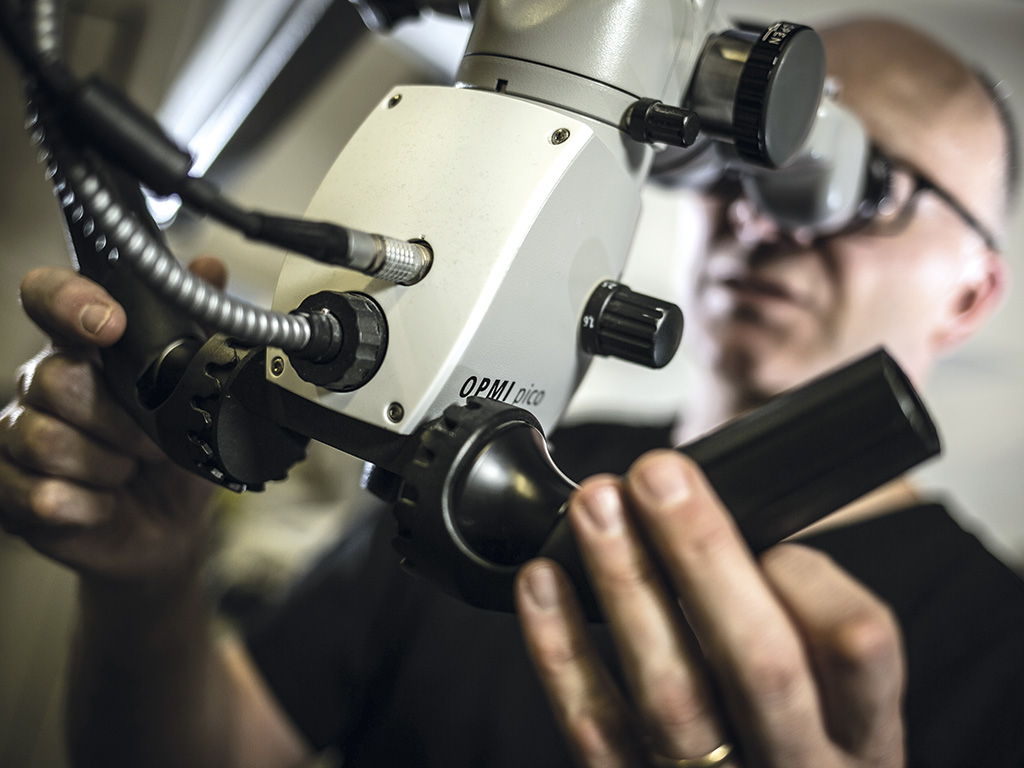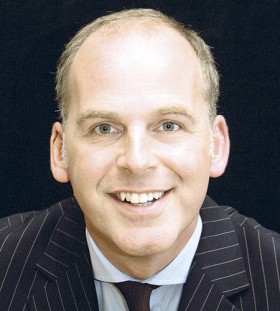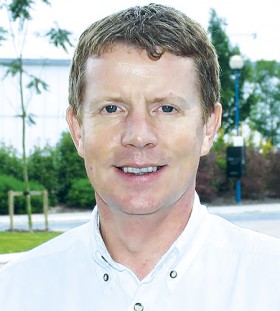Under the microscope
If you can’t see it, you can't treat it, runs the old adage. Here, Ian MAcMillan talks to leading dentist Jason Smithson and NuView’s John Woods to get an insight on the use of microscopes
The last decade has seen a huge increase in the use of magnification in dentistry, with most loupe users finding it anathema to now work without their most prized of assets. Furthermore, the operating microscope, once used almost exclusively in teaching facilities and specialist clinics, is now found in an increasing number of general dental practices. Scottish Dental magazine discusses this rise in microscopes with Jason Smithson (a member of the influential Bio Emulation – an international group of dentists that aims to establish high aesthetic standards) and John Woods (MD of NuView/Zeiss) and asks what does the future hold?
SDM: Jason, when and why did you make the decision to opt for a scope?
JS: It was about five or six years ago. One of my technicians is based in the USA and of his six or so accounts I was the only one who didn’t use a microscope. It got me thinking and a few months later I made the leap. Basically, I felt that if I wanted to practise dentistry at as high a standard as I possibly could, then a scope was essential. The precision, particularly when prepping, makes it invaluable to me. I was a huge fan of loupes before I switched to a scope. With loupes I could see things I couldn’t with the naked eye. The scope simply makes me see things better and clearer.
“Another key advantage is the ability to provide high definition visualisation and the ability to record both still images and video”
SDM: John, what do you regard as the main advantages and disadvantages of a scope?
JW: Many practitioners feel that the learning curve required to practise proficiently with a microscope and the time required to master one are major drawbacks, but those who regularly use one will generally say that they actually save time on procedures. Having said that, there is without doubt a period of, shall we say, acclimatisation. This varies with the user, but can take a few months.
JS: I would echo that. It took me two to three months, but it’s a lifestyle choice as it were – it does take effort to master. Once you have you won’t look back. Without doubt, the advantages outweigh any potential hindrances. With a scope you unquestionably become more precise and it’s a great marketing tool – you become known locally as the high-tech dentist down the road. Patient acceptance is generally very good and they are, on the whole, fairly impressed.
SDM: The initial outlay is fairly high. Do you see that as a downside?
JW: For sure, cost is a factor, but it’s rarely the main factor. Most dentists I work with regard it as a long-term investment in their clinical future.
JS: The capital write off and high resale makes it a no brainer in my book. I would always recommend not to be fooled into buying really cheap stuff which is not future proofed… this is a 10-20-year investment.
JW: Another key advantage is the ability to provide high definition visualisation and the ability to record both still images and video and to integrate these easily into patient notes.
JS: Not to mention the fact that you can probably say goodbye to the cursed bad back which affects a good number of dentists these days. It might not seem like a huge advantage, but a few days off work here and there with back ache can prove costly.
- Jason Smithson is a member of Bio Emulation
- John Woods, managing director of NuView/Zeiss
SDM: Looking forward, what challenges and advances do you envisage?
JW: The biggest challenges are going to be around incorporating further innovations in visualisation technology. A lot of people have now seen ultra-high definition televisions (UHD) and the whole arena of UHD (or 4K as its currently known) will radically change the ways in which even digital SLR cameras work. Right now there is a differentiation and separation between video cameras and SLR cameras, which I think may well entirely vanish in the near future. Today, people are used to, and even expect, HD quality images, so what will be interesting over the coming years is to see how UHD fits into and becomes the industry norm, and then how the camera technology adapts to incorporate this emerging technology. Although UHD technology, particularly now that it is being incorporated into televisions, is becoming more readily available in the marketplace, it will take potentially two years before technology standards are properly set out and agreed and we will begin to see cameras and microscopes becoming generally available that fully incorporate UHD technology.
Micro management
There are pros and cons to investing in a microscope but david ballantyne of comely bank is all for it
Around five years ago dental practice became a lot clearer for David Ballantyne. That’s when he decided to make the investment in a surgical microscope. It’s a decision, he believes, that has seen him offer his patients a better overall service.
“In a nutshell, it allows you to see much better and do much more,” said Ballantyne, who operates a practice alongside Mark McCutcheon at Comely Bank in Edinburgh.
“I am very keen on endodontics and initially invested in it for that purpose, although it has lots of other uses. When I was considering the purchase, I opted for a model that offered high quality optics and an integrated camera.”
He highlighted the basic advantages – as well as offering significant magnification, the light is co-axial, which means that you are able to look through it and don’t see any shadows.
In terms of patient care, it allows you to offer more effective diagnosis and treatment. “You can pick up things that you might not spot when you’re using loupes,” said Ballantyne. “Certainly when it comes to endodontics, I feel that I’m able to cover almost every angle.
“Many people use the microscope for every routine and some believe that it allows them to work more quickly. I don’t use it as a matter of course. I tend to use loupes in general work then turn to the microscope when required. However, I do think that it has allowed me to give a better service.”
Patients have accepted the technology without question he says, and they respond positively to the images he is able to produce. Having the full picture, as it were, gives them a much better idea of what their dentist is doing, and makes it simpler to explain why they require treatment.
It’s not just patients who benefit. Often dentists can develop neck and back problems due to the physical nature of their work. However, using a microscope can help alleviate these. “You’re able to sit up much straighter and there’s less pressure on your back and neck. It’s made a big difference to me,” said Ballantyne.
Despite the pros, there are some counter-balancing cons, Ballantyne observed. “For some restorative work it can be quite awkward getting the patient positioned just so.
“Similarly, this scope cost about £19,000 and I doubt I will achieve a significant return on investment. Indeed, I think that cost has so far been the biggest factor preventing widespread take up. There are probably other investments you can make that would give a better return. But if it’s the sort of thing you appreciate, it offers a world of difference. Even five years on I am finding more and more ways to use it.”
About the author
Ian S Macmillan qualified from the University of Glasgow in 1991 and, after a period working in Dundee Dental Hospital, he entered general practice. He currently works in private practice in Balfron, Stirlingshire.



Comments are closed here.